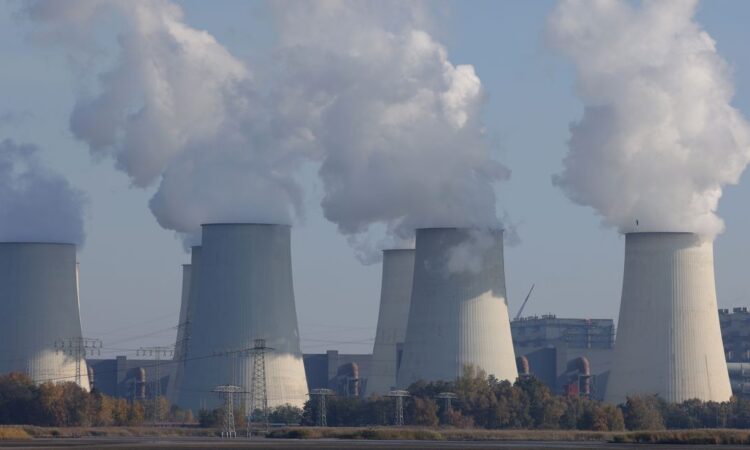
The price of carbon permits––costs that factories and power plants need to pay when they pollute more than a certain amount––hit €100 per metric ton on the European market for the first time on Tuesday.
This marks a milestone for one of the key tools the European Union is using to meet its climate targets. Investors can profit from the carbon-trading market through some exchange-traded funds, but caution is warranted. Although prices should rise over time, and have taken off this year, they can be highly volatile.
Carbon-credit markets have been around for a long time as global governments aim to cut companies’ emissions without outright bans. Each company receives a quota for how much carbon dioxide it can emit. Those that exceed the threshold have to purchase extra permits from those that pollute less.
Theoretically, prices for carbon permits are expected to rise over the long term as governments gradually tighten the caps. The goal is to motivate polluting companies to switch to fuels with lower emissions, or to invest in low-carbon technologies.
A 2020 study indicated that the process is working. It found that the EU’s trading system led to a 4% reduction in the region’s emissions between 2008 and 2016. But the progress was mainly due to power companies switching from fossil fuels to renewables, instead of innovative solutions to decarbonize heavy industries like cement and steel.
Advertisement – Scroll to Continue
The €100 ($106) price has long been viewed as a psychologically important benchmark that might prompt a shift to newer technologies. The thinking is that as carbon allowances become too expensive to afford, companies might finally start to seriously consider investing in technologies with high initial costs, such as carbon capture and hydrogen.
The cost of carbon emissions in the EU has been rising over the past few months, partly because the bloc agreed to tighten rules late last year as part of its effort to cut emissions by 55% by 2030. Increased coal use this winter––a response to reduced supplies of Russian gas––has also spurred more demand for carbon credits. Burning coal emits roughly twice as much carbon as natural gas.
While most investors can’t directly trade carbon credits, there are some exchange-traded funds that allow people to bet on the market. For EU exposure, the $28 million
KraneShares European Carbon Allowance Strategy ETF
(ticker: KEUA) tracks the most-traded futures contracts on the European carbon market. It has gained 33% over the past three months.
The $675 million
KraneShares Global Carbon Strategy ETF
Advertisement – Scroll to Continue
(KRBN) offers a more diversified portfolio. It holds the most-traded carbon credits futures contracts across a few major markets in the U.S., EU, and U.K.
It is important to note that carbon costs vary greatly around the globe. While European allowances have reached €100 per metric ton, carbon credits in California are trading at less than $30. They sell for less than $10 in China.
Institutional investors and hedge funds have used carbon futures to diversify their portfolios because they tend to move independently from traditional asset classes like stocks and bonds. Carbon futures can also be a hedge against the investment risk resulting from the global economy’s transition away from fossil fuels.
Advertisement – Scroll to Continue
Still. there are risks. The carbon market can be swayed by economic cycles, the weather, and changes in energy prices, which makes it wildly volatile at times. Following the 2008 financial crisis, carbon prices languished for a long time due to a surplus of allowances built up during the economic downturn.
There is also political risk. While rising carbon prices are largely viewed as a useful tool to encourage companies to meet their climate goals, there has been a debate in the EU on whether recent surges in the cost of permits are making inflation worse. Poland and Spain are among the countries that have called for caps on carbon prices to avoid soaring energy bills.
Write to Evie Liu at [email protected]






